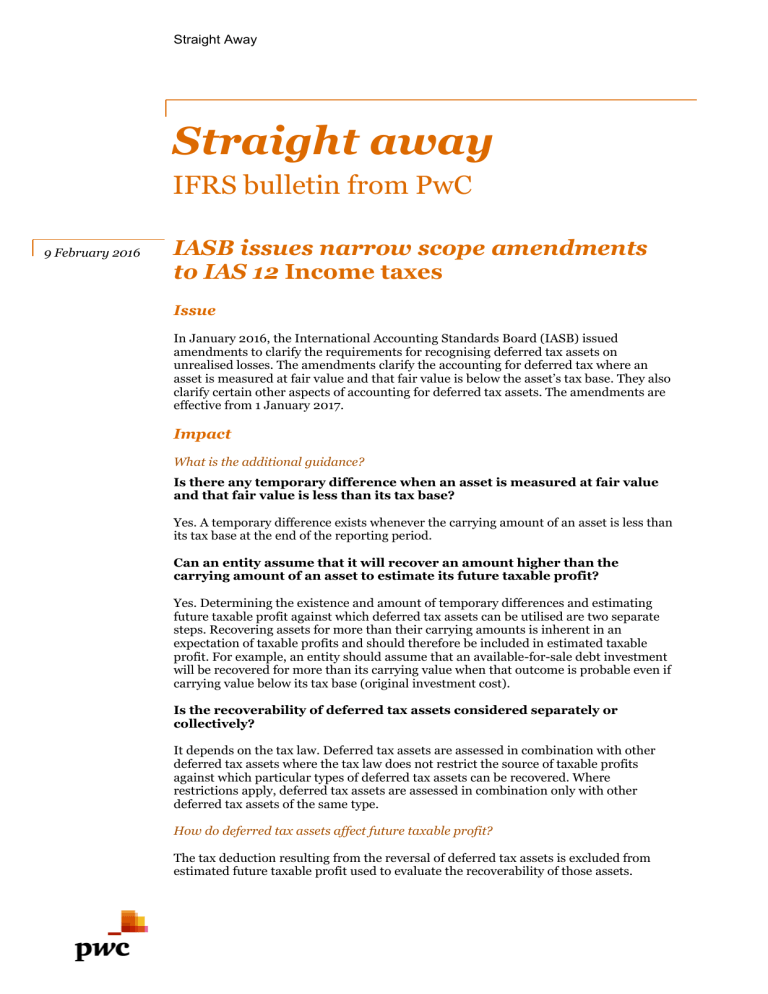
Straight Away Straight away IFRS bulletin from PwC 9 February 2016 IASB issues narrow scope amendments to IAS 12 Income taxes Issue In January 2016, the International Accounting Standards Board (IASB) issued amendments to clarify the requirements for recognising deferred tax assets on unrealised losses. The amendments clarify the accounting for deferred tax where an asset is measured at fair value and that fair value is below the asset’s tax base. They also clarify certain other aspects of accounting for deferred tax assets. The amendments are effective from 1 January 2017. Impact What is the additional guidance? Is there any temporary difference when an asset is measured at fair value and that fair value is less than its tax base? Yes. A temporary difference exists whenever the carrying amount of an asset is less than its tax base at the end of the reporting period. Can an entity assume that it will recover an amount higher than the carrying amount of an asset to estimate its future taxable profit? Yes. Determining the existence and amount of temporary differences and estimating future taxable profit against which deferred tax assets can be utilised are two separate steps. Recovering assets for more than their carrying amounts is inherent in an expectation of taxable profits and should therefore be included in estimated taxable profit. For example, an entity should assume that an available-for-sale debt investment will be recovered for more than its carrying value when that outcome is probable even if carrying value below its tax base (original investment cost). Is the recoverability of deferred tax assets considered separately or collectively? It depends on the tax law. Deferred tax assets are assessed in combination with other deferred tax assets where the tax law does not restrict the source of taxable profits against which particular types of deferred tax assets can be recovered. Where restrictions apply, deferred tax assets are assessed in combination only with other deferred tax assets of the same type. How do deferred tax assets affect future taxable profit? The tax deduction resulting from the reversal of deferred tax assets is excluded from estimated future taxable profit used to evaluate the recoverability of those assets. Straight Away Effective date and transition The amendments are effective for annual periods beginning on or after 1 January 2017. Earlier application is permitted. An entity may, on initial application of this amendment, elect to recognise any change in the opening equity of the earliest comparative period presented in the opening retained earnings (or in another component of equity, as appropriate), without allocating the change across different equity components. Insight The amendments clarify the existing guidance under IAS 12. They do not change the underlying principles for the recognition of deferred tax assets. The amendments arose from a question about the deferred tax accounting on debt investments measured at fair value; however, the amendments are not limited to any specific type or class of assets, and they clarify several of the general principles underlying the accounting for deferred tax assets. This content is for general information purposes only, and should not be used as a substitute for consultation with professional advisors. © 2016 PwC. All rights reserved. PwC refers to the PwC network and/or one or more of its member firms, each of which is a separate legal entity. Please see www.pwc.com/structure for further details.




